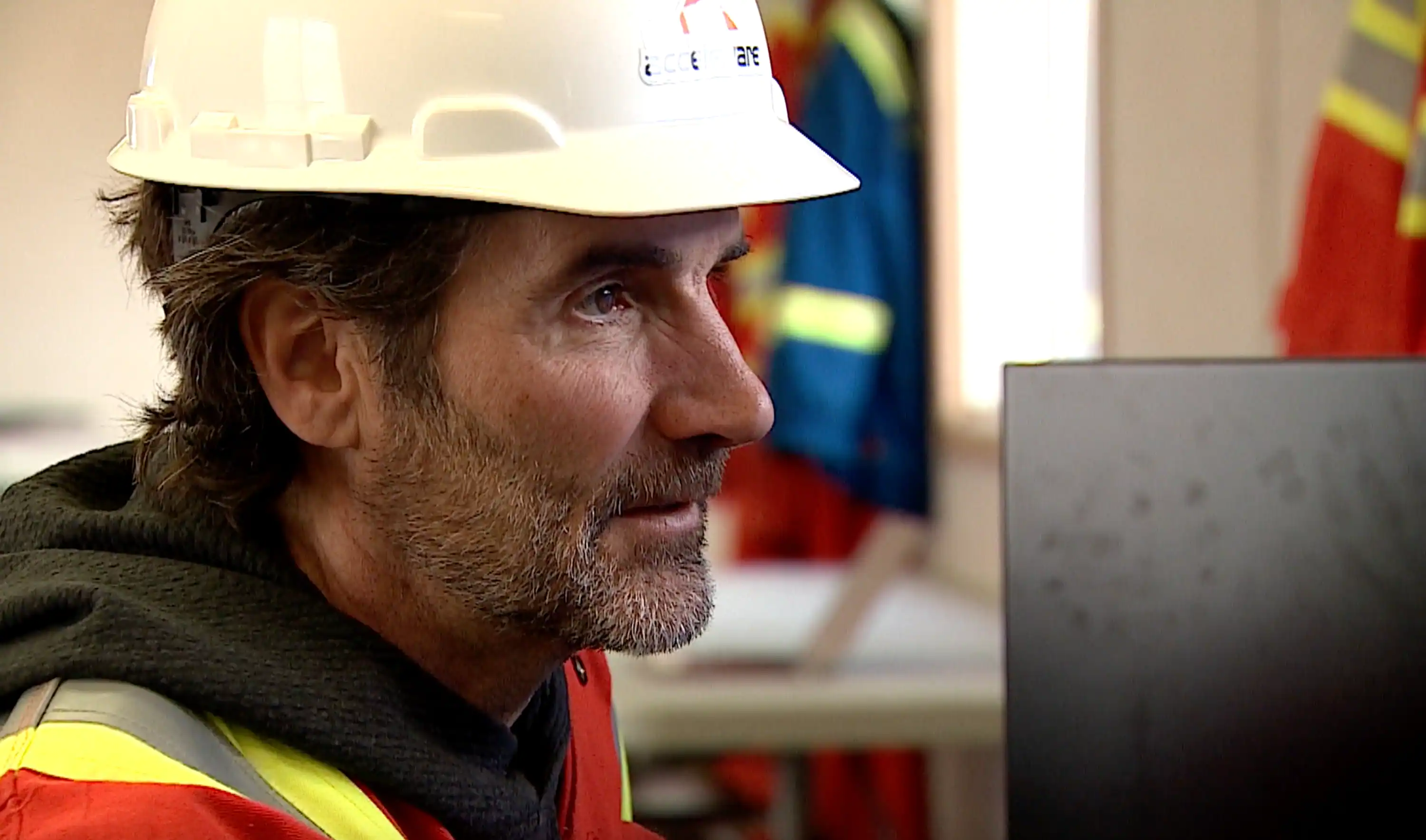As oilsands companies work to meet their climate targets and face an incoming limit on total emissions from the federal government, there has never been as much focus on how the industry in northern Alberta can cut its vast air pollution. The result is a wave of technological innovation, including ideas first conceived many decades ago — like microwaving the oil out of the ground.
That’s essentially the technology developed by Calgary-based software company Acceleware, which began producing oil at its demonstration facility in the province last month near Lloydminster.
Underground, the company uses radio waves to heat up oil, which is then pumped to the surface. The technology remains in development and still faces challenges, but its backers say it has the potential to cut carbon emissions in the sector.
“Since the 40s, people have thought of the idea of using radio frequency energy to produce oil,” said Acceleware’s CEO Geoff Clark.
In the past, even in recent decades, researchers were using radio or TV station equipment, which Clark said doesn’t work well as a heat source.
“In our opinion, the frequency ranges are all wrong, the efficiency is all wrong and the capital cost of that communications equipment is way too high,” he said.
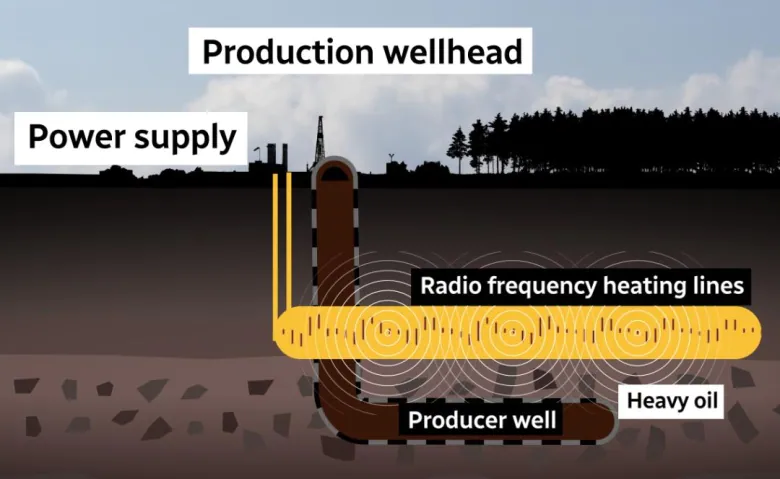
When oilsands companies drill oil wells, they typically heat up the bitumen using steam, which is produced using natural gas. If radio wave technology is successful, companies could reduce their emissions and water use. There could be operational and capital cost savings too, Clark said.
“Using electrification to decarbonize the production of heavy oil is really what we’re trying to do,” he said. “The big challenge for us is to demonstrate that we’re doing what we say the technology can do.”
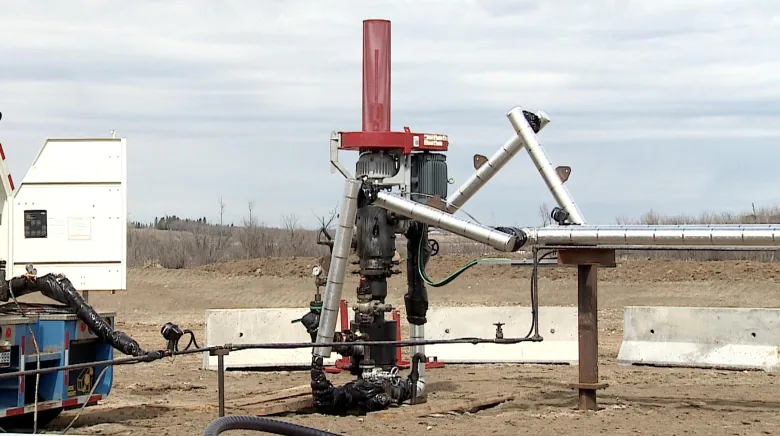
The Acceleware demonstration facility began operating in March and began producing oil in April, although the company wouldn’t say how much. The company is gradually increasing the amount of electricity to test how much heat and oil can be produced.
The plan is to operate the project for six to 12 months, to gather enough data. Acceleware doesn’t want to be an oil company itself, but instead sell and service the equipment to oilpatch producers.
The technology could be ready for use in industry as soon as next year, the company said, if the demonstration is successful.
WATCH | How Acceleware got the idea to use radio waves in the oilpatch:
The idea came from a project in California, says Geoff Clark, the company’s CEO. 1:54
‘It’s early days’
Acceleware, which was founded in 2004 as a software company, has received more than $15 million in government grants from Alberta Innovates, Emissions Reduction Alberta and Sustainable Development Technology Canada. Industry partners include oilsands heavyweights Suncor and Cenovus.
“It’s early days, but it’s exciting,” said Bryan Helfenbaum, executive director of advanced hydrocarbons at Alberta Innovates, a provincial government corporation.
Acceleware is entering a “critical point,” he said, as the next few months will show what kind of oil production is possible at what depth, scale, price and duration.
“There’s a lot of factors that will go into the commercial viability and whether this is a solution that could be applied very broadly, or more of a niche opportunity,” said Helfenbaum. “This is a really novel approach that can significantly reduce our emissions, especially as the Alberta electricity grid greens over time.”
WATCH | Heavy oil producers are testing many ways to reduce emissions such as using solvents, like butane:
There are many ongoing projects to test new techniques and technology to cut pollution from the oilsands, says Bryan Helfenbaum, with Alberta Innovates. 1:39
Helfenbaum was part of a similar project several years ago before he joined Alberta Innovates, as Suncor and other industry members explored using radio waves and solvents to create underground heat.
The project cost more than $100 million, but was never fully tested, Helfenbaum said, because of installation and other problems.
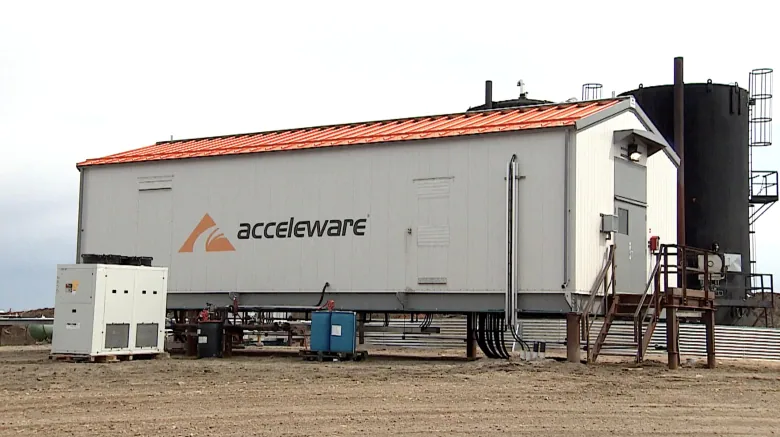
Several possible solutions
There are dozens of other research projects underway aimed at reducing emissions in the oilsands, including a focus on decreasing the amount of steam required to heat up underground bitumen. Some companies are experimenting with using solvents and chemicals.
If Acceleware is successful with its technology, the company could branch out into industries such as hydrogen production or grain drying.
“We think that we’ve chosen the hardest application first and that’s the one that’s 500 metres underground,” said Clark.
Oon-Doo Baik, a University of Saskatchewan engineer who studies radio frequency heating of biomaterials, said it can be an “energy-efficient process, but it is a sophisticated process.” There needs to be a good knowledge of the electromagnetic field, for instance, to use the technology efficiently and properly in related industries, he said, in an emailed response about radio frequency heating.
Most oilsands companies have set a target to reach net-zero by 2050, while the federal government is expected to introduce an emissions limit for the industry later this year.
Oilsands facilities in northern Alberta account for about 11 per cent of Canada’s total carbon emissions. The federal government expects the oilpatch to cut emissions by more than 40 per cent by 2030.
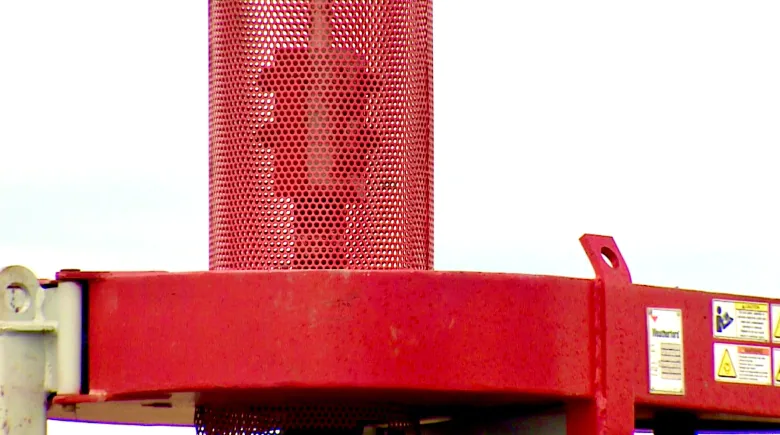
Reference-www.cbc.ca
